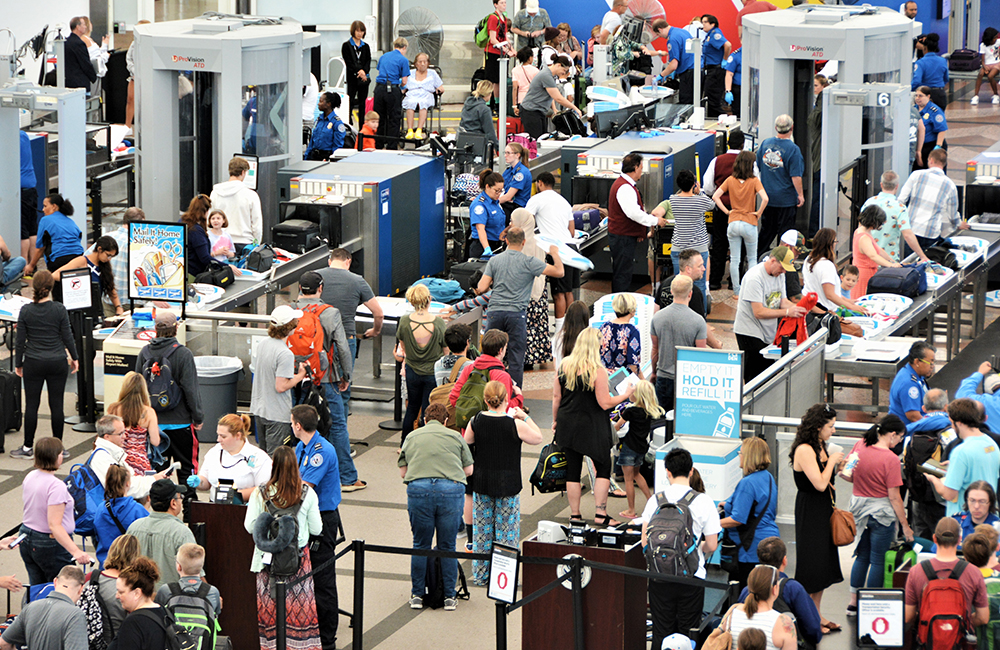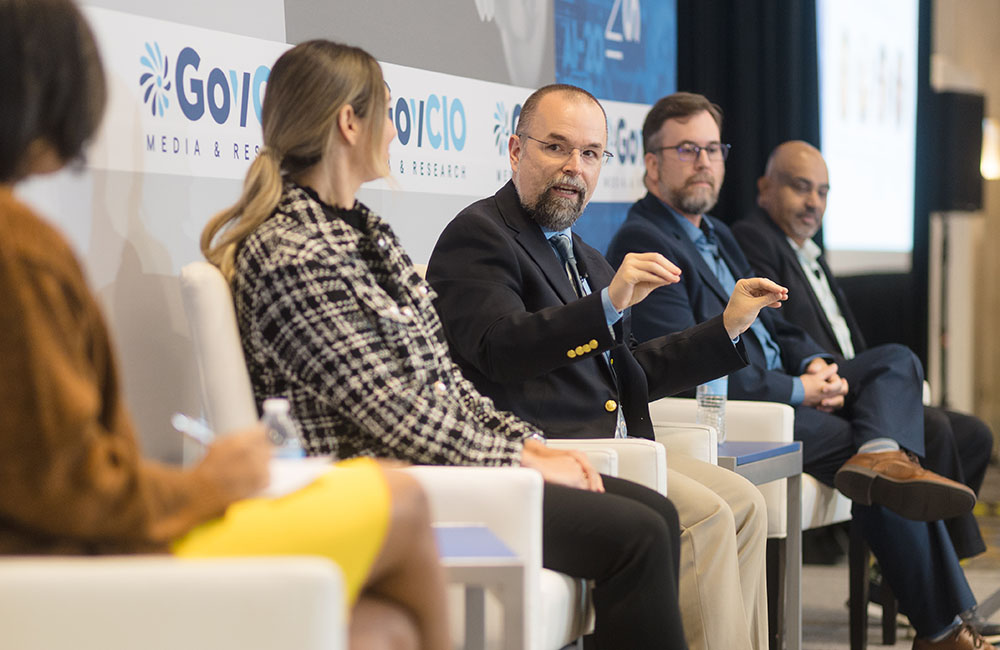How TSA Wants to Attract a Skilled Workforce
New policies are incorporating more flexibility to recruit talented employees.

COVID-19 was a game changer that forced many federal agencies to deploy more remote work environments. Since then, the Transportation Security Administration has strived to maintain its workforce as well as attract new employees by leveraging opportunities that center around flexibility.
In order to get back to attracting highly skilled employees, leaders have to have that degree of flexibility and trust with the workforce, said Charlene McCollum, director of TSA’s human resources office in services delivery.
“Just that one ask and that degree of honesty and the organization can make adjustments. The employee felt devalued and there was a different level of dedication and energy from that employee,” McCollum said. “So, we have to be flexible and understanding as situations happen.”
McCollum said old policies can adapt to new situations, but in order to make it all work staff needs to feel empowered.
McCollum believes it’s important to start with everyone knowing what the baseline is so that staff will know how to bend outside the stoic rules, but stay true to that policy.
“We have found where we need to adjust our policies because sometimes we have restricted ourselves from embarking on some flexibilities that we could have because we’ve written our policies so absolute, thou shalt not do,” McCollum said. “We have to know when it’s time to say this doesn’t make sense anymore and mostly to hear from our staff. Those on the front lines doing the work, they are the ones most critical to the process and the need for change because they can say this doesn’t work.”
The National Institute of Standards and Technology (NIST) has launched the National Initiative for Cybersecurity Education (NICE) Framework to help address the challenges of attracting more job candidates to the cybersecurity field.
Karen Wetzel, manager of the NICE Framework at NIST, said the NICE framework establishes that common language so that we can share information about cybersecurity work and we can do that from one agency to another.
“It’s helping to provide information about what the workforce needs to know to help the people as they’re moving into these roles, what that work is going to be and how they should be prepared for that,” Wetzel said.
Agencies are utilizing NICE as the first step in moving forward with bringing more people into these positions. However, Wetzel said many of the cybersecurity postings require certifications that most people don’t have.
“Putting limits is not good for us. What can be required of that person on day one and what can be taught on the job. We need to start thinking about things differently,” Wetzel said. “Instead of relying on degrees and certifications we should look at competency areas or add to existing work roles so there is common ground for learning at lower and higher levels.”
TSA is embarking on a journey where it’s looking at workforce and succession planning as well as competencies.
“What competencies do we need now and which competencies do we need in the near future and how do we recruit for that?” McCollum said. “How do we go and seek a workforce that is attractive and who will take on these jobs that aren’t necessarily telework?”
This is a carousel with manually rotating slides. Use Next and Previous buttons to navigate or jump to a slide with the slide dots
-

Opinion: Original Intelligence Is the Missing Piece for AI Transformation
Limitations of AI agents and development drive growing needs for workforce development and "original intelligence."
3m read -

VA CIO Targets Modern IT and Smarter Workforce Alignment
Agency leaders told lawmakers they are focused on trimming legacy systems and restructuring its workforce to streamline operations.
3m read -

Pentagon's $200M AI Contracts Signal Broader Effort to Transform Talent
The Army is leveraging Silicon Valley, reservist programs and new hiring strategies to integrate critical digital skills in its ranks.
5m read -

Inside DOD’s Push to Grow the Cyber Workforce Through Academia
Diba Hadi gives her first interview since becoming principal director of the DOD’s Cyber Academic Engagement Office.
15m listen -

Generative AI Demands Federal Workforce Readiness, Officials Say
NASA and DOI outline new generative AI use cases and stress that successful AI adoption depends on strong change management.
6m read -

The Next AI Wave Requires Stronger Cyber Defenses, Data Management
IT officials warn of new vulnerabilities posed by AI as agencies continue to leverage the tech to boost operational efficiency.
5m read -

Federal CIOs Push for ROI-Focused Modernization to Advance Mission Goals
CIOs focus on return on investment, data governance and application modernization to drive mission outcomes as agencies adopt new tech tools.
4m read -

Data Transparency Essential to Government Reform, Rep. Sessions Says
Co-Chair of the Congressional DOGE Caucus Rep. Pete Sessions calls for data sharing and partnerships to reduce waste and improve efficiency.
5m read -

DOD Turns to Skills-Based Hiring to Build Next-Gen Cyber Workforce
Mark Gorak discusses DOD’s efforts to build a diverse cyber workforce, including skills-based hiring and partnerships with over 480 schools.
20m listen -

Trump Executive Order Boosts HBCUs Role in Building Federal Tech Workforce
The executive order empowers HBCUs to develop tech talent pipelines and expand access to federal workforce opportunities.
3m read -

DOD Can No Longer Assume Superiority in Digital Warfare, Officials Warn
The DOD must make concerted efforts to address cyber vulnerabilities to maintain the tactical edge, military leaders said at HammerCon 2025.
4m read -

Tracking CIOs in Trump's Second Term
Stay informed on the latest shifts in federal technology leadership as new CIOs are appointed and President Trump's second term takes shape.
6m read




